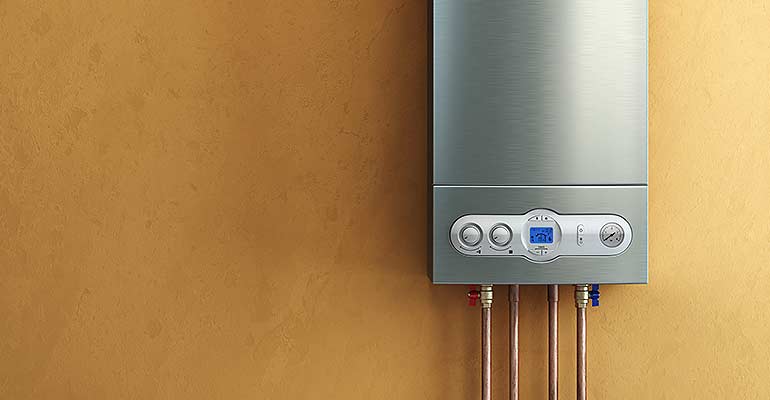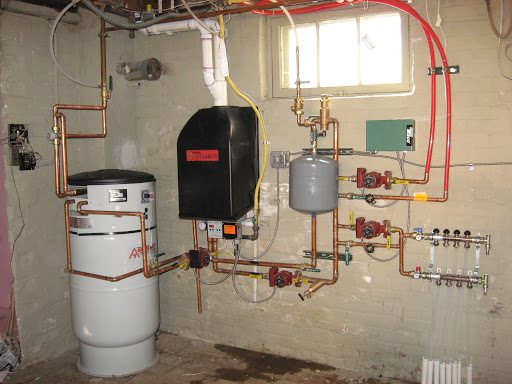Easy Ways to Care for Your Home's Hot Water System ProperlyEasy Steps to Maintaining Your Home's Hot Water SystemEnsuring Longevity of Your Home's Hot Water System: Care Advice
Easy Ways to Care for Your Home's Hot Water System ProperlyEasy Steps to Maintaining Your Home's Hot Water SystemEnsuring Longevity of Your Home's Hot Water System: Care Advice
Blog Article
Have you been in search of tips involving How to Maintain a Hot Water Heater in a Few Simple Steps?

Hot water is crucial for daily convenience, whether it's for a refreshing shower or washing meals. To guarantee your hot water system runs effectively and lasts longer, regular maintenance is vital. This article offers practical ideas and understandings on how to maintain your home's hot water system to stay clear of disruptions and expensive repairs.
Introduction
Maintaining your home's hot water system may seem daunting, but with a few easy actions, you can guarantee it operates smoothly for many years to find. This overview covers everything from understanding your warm water system to DIY maintenance tips and knowing when to call in expert assistance.
Relevance of Keeping Your Warm Water System
Routine maintenance not only prolongs the life expectancy of your hot water system however also ensures it runs successfully. Neglecting maintenance can result in decreased effectiveness, greater power costs, and even premature failing of the system.
Indicators Your Warm Water System Demands Maintenance
Recognizing when your warm water system requires focus can prevent major issues. Look out for indicators such as irregular water temperature level, odd noises from the heater, or rusty water.
Flushing the Hot Water Heater
Flushing your water heater removes debris accumulation, enhancing effectiveness and lengthening its life.
Checking and Replacing Anode Rods
Anode poles stop deterioration inside the storage tank. Examining and replacing them when broken is essential.
Complex Issues Requiring Expert Assistance
Examples consist of significant leaks, electrical issues, or if your water heater is continually underperforming.
Regular Professional Upkeep Conveniences
Expert upkeep can consist of detailed assessments, tune-ups, and guaranteeing conformity with security standards.
Checking and Adjusting Temperature Level Settings
Readjusting the temperature setups makes sure ideal performance and safety and security.
DIY Tips for Upkeep
You can perform a number of maintenance tasks on your own to keep your warm water system in top problem.
Checking for Leakages
On a regular basis check pipes and links for leaks, as these can bring about water damage and higher costs.
Understanding Your Hot Water System
Before diving right into upkeep tasks, it's handy to understand the fundamental elements of your hot water system. Normally, this includes the water heater itself, pipelines, anode poles, and temperature controls.
Regular Monthly Upkeep Tasks
Regular regular monthly checks can aid catch minor issues before they intensify.
Checking Stress Alleviation Valves
Testing the pressure safety valve guarantees it functions properly and prevents excessive pressure accumulation.
Insulating Pipes
Protecting hot water pipelines reduces heat loss and can save power.
When to Call a Professional
While DIY maintenance is valuable, some issues call for professional expertise.
Final thought
Normal maintenance of your home's hot water system is essential for effectiveness, long life, and expense financial savings. By following these tips and recognizing when to look for specialist help, you can ensure a trustworthy supply of warm water without unexpected disturbances.
Water Heater Maintenance: The Basics
Maintaining your water heater will ensure it operates efficiently and has a longer lifespan. Neglecting regular maintenance can lead to costly repairs and an even bigger chunk of your savings if you have to replace it sooner than necessary. But there’s good news: Most water heater maintenance tasks are relatively simple and easy for homeowners with basic DIY skills.
Flush the Water Heater
Over time, sediment and minerals can build up in the tank, reducing its efficiency and potentially causing damage. To flush the tank, turn off the power or gas supply, attach a hose to the drain valve near the bottom and open the valve to drain the water until it runs clear. Ideally, flush the tank annually.
Replace the Anode Rod
The anode rod is a sacrificial metal rod that helps prevent corrosion inside the tank. Inspect and replace it every three to five years or per the manufacturer's recommendation. To replace the anode rod, turn off the power or gas supply, drain a few gallons of water from the tank, unscrew the old rod and replace it with a new one. If the anode rod is significantly corroded or covered in calcium buildup, it's a sign the water heater may need to be replaced soon.
Tune-Up
A yearly tune-up can help identify potential issues and ensure your water heater operates at peak efficiency. This typically involves checking the thermostat, burner assembly (for gas heaters) and any other components specified by the manufacturer. During a tune-up, the technician may also clean the burner and adjust the pilot light (for gas heaters) or examine the heating elements (for electric heaters).
How to Maintain Your Water Heater
Insulate the tank. Insulating the tank can improve energy efficiency and reduce heat loss, saving you money on energy bills. You can purchase precut insulation blankets designed specifically for water heaters or use standard fiberglass insulation wrapped securely around the tank. Check the temperature. The recommended water temperature for most households is around 120 degrees Fahrenheit (49 degrees Celsius). Higher temperatures can increase energy costs and potentially cause scalding. Use a kitchen thermometer to check the temperature at the faucet nearest the water heater. Monitor water pressure. Excessive water pressure can strain the water heater and cause leaks or even tank failure. Install a pressure-reducing valve if necessary. The ideal water pressure range is between 60 and 70 PSI (pounds per square inch). Test the temperature and pressure (T&P) relief valve. The T&P relief valve is a safety feature that releases pressure if the tank gets too hot or the pressure builds up too high. Test it annually by lifting the lever and allowing a small amount of water to release. Replace the valve if it doesn't release water or reseal properly. Check for leaks. Regularly inspect the tank, pipes and fittings for leaks or corrosion. Deal with issues promptly to prevent further damage. Even a small leak can lead to significant water damage over time. Consider a tankless water heater. If your traditional tank-style water heater is nearing the end of its lifespan ( typically 10 years), consider replacing it with a tankless water heater. These units heat water on demand, reducing standby energy losses and potentially saving you money on your energy bills. Schedule professional maintenance. While homeowners can perform many water heater maintenance tasks, it's still a good idea to schedule professional maintenance every few years. A plumber or HVAC technician can thoroughly inspect the unit, identify potential issues and ensure it operates safely and efficiently. https://www.homeserve.com/en-us/blog/home-improvement/hot-water-heater-maintanence/

I hope you liked our excerpt about How to Maintain a Hot Water Heater in a Few Simple Steps. Many thanks for taking time to read our post. Kindly set aside a second to share this entry if you liked it. Thanks a bunch for your time. Return soon.
View Report this page